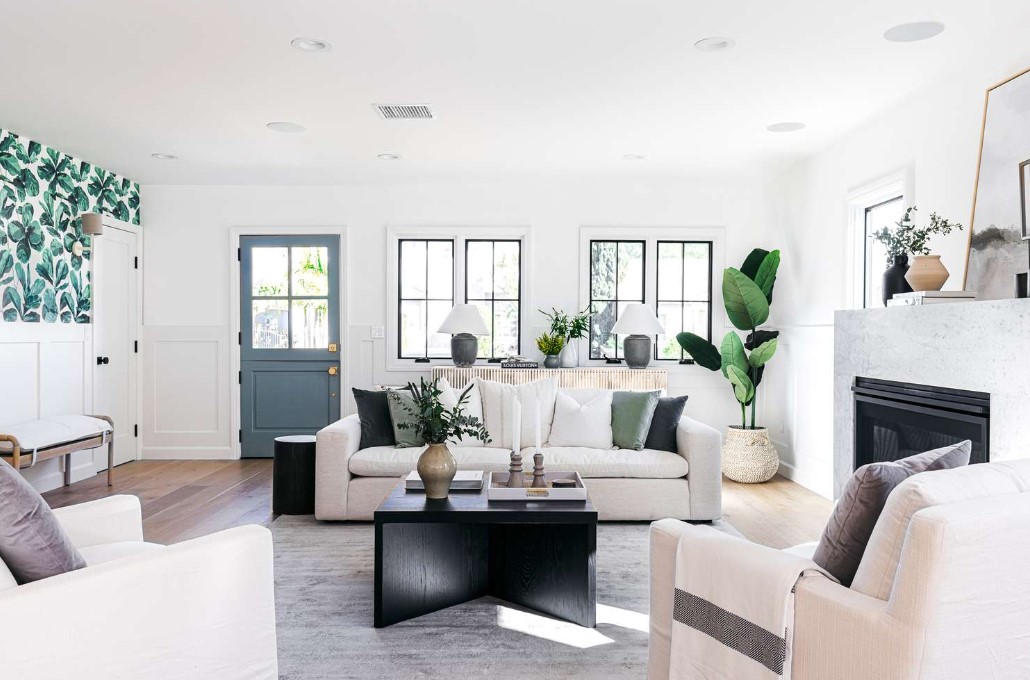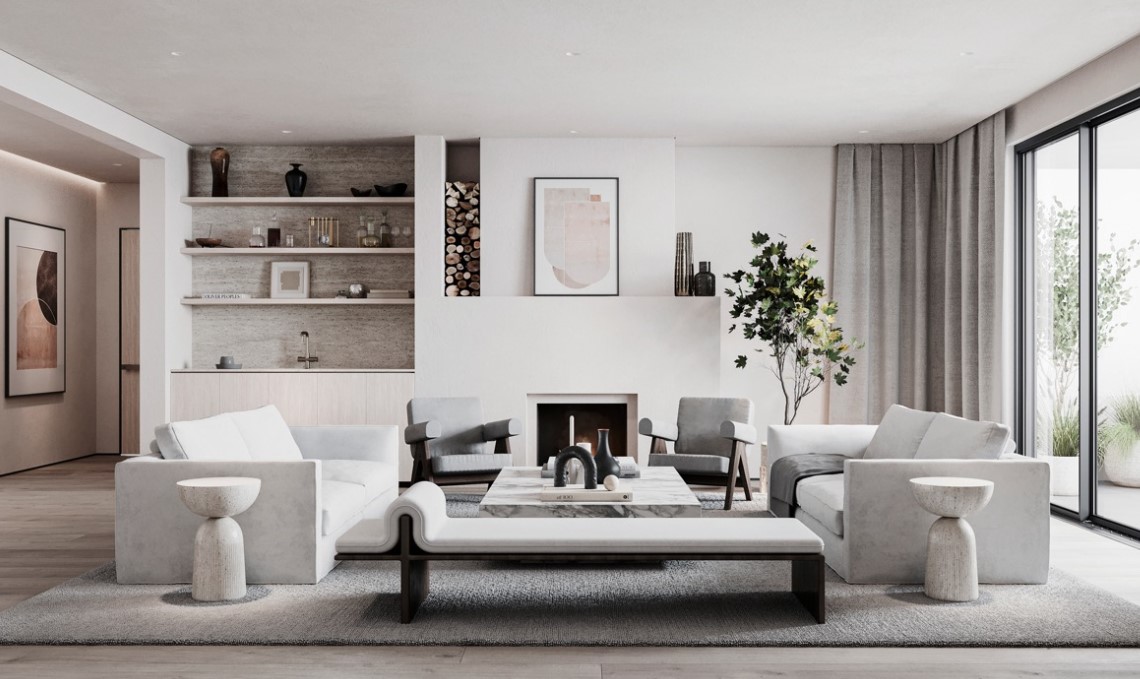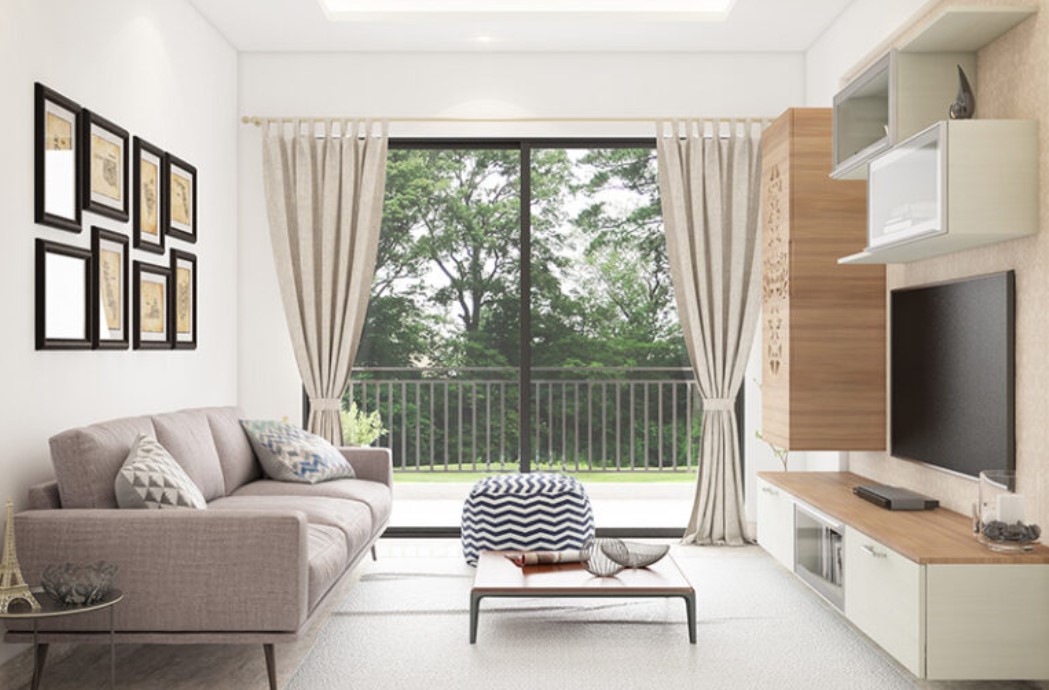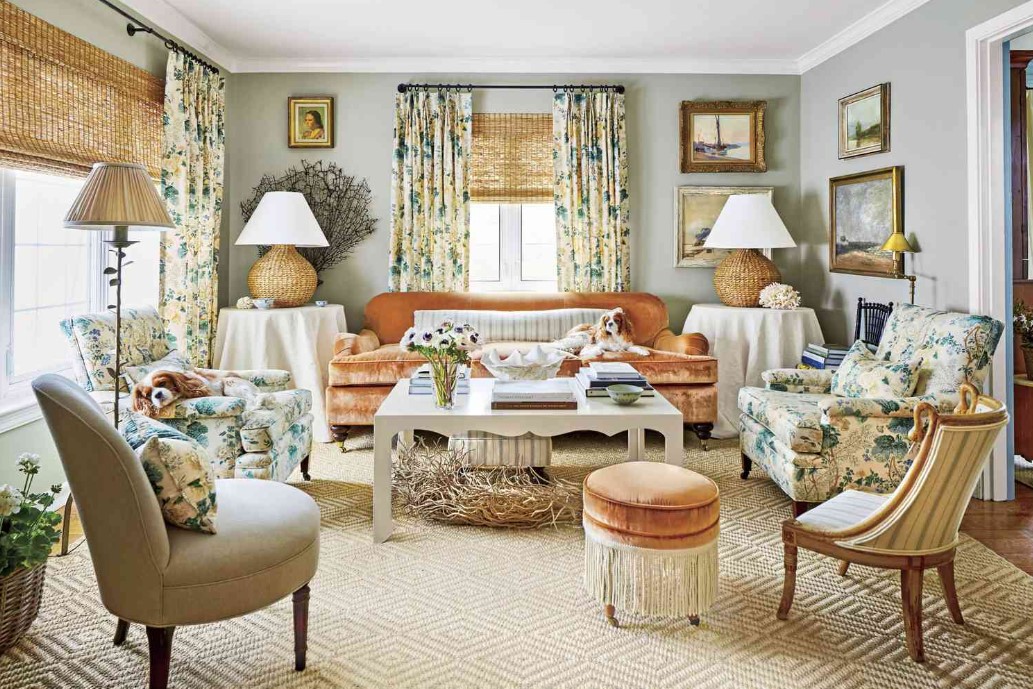The living room is often the centerpiece of a home—a space where relaxation meets entertainment and personal style. Choosing the right furniture sets the tone for this multifunctional area, balancing comfort with aesthetics. Whether you’re furnishing a new living room or updating your current space, exploring various furniture ideas can transform it into a cozy retreat that reflects your personality. This introduction explores essential furniture pieces and creative ideas to inspire your living room design.
Importance of Choosing the Right Furniture

Choosing the right furniture is crucial for creating a functional, comfortable, and visually appealing living space. Here’s why it’s important to select furniture carefully:
- Functionality: Furniture serves a practical purpose in a home, providing comfort and support for daily activities. Choosing pieces that match the intended function of a room—whether it’s seating for relaxation, a dining table for meals, or storage solutions for organization—ensures that the space serves its intended purpose effectively.
- Comfort: Comfort is paramount when selecting furniture, especially for pieces used frequently such as sofas, chairs, and beds. Ergonomic design, appropriate cushioning, and quality materials contribute to physical comfort and overall well-being. Comfortable furniture enhances relaxation and enjoyment within your home.
- Aesthetic Appeal: Furniture significantly contributes to the visual appeal and ambiance of a room. The style, color, and design of furniture pieces impact the overall aesthetic and atmosphere. Choosing furniture that complements the decor style—whether it’s modern, traditional, minimalist, or eclectic—creates a cohesive and harmonious look.
- Space Utilization: Furniture plays a crucial role in optimizing space utilization within a room. Selecting appropriately sized pieces prevents overcrowding or underutilization of space. Modular or multifunctional furniture can maximize space efficiency in smaller rooms or multifunctional areas like home offices or studio apartments.
- Quality and Durability: Investing in high-quality furniture ensures longevity and durability. Well-constructed pieces withstand daily wear and tear, maintaining their structural integrity and aesthetic appeal over time. Quality materials and craftsmanship contribute to furniture’s resilience and resistance to damage.
- Safety: Safety is a critical consideration, especially for households with children or pets. Choosing furniture with rounded edges, sturdy construction, and non-toxic materials ensures a safe environment. Properly secured furniture prevents accidents such as tip-overs and entrapment.
- Functionality and Versatility: Functional and versatile furniture adapts to changing needs and lifestyles. Pieces with storage options, adjustable features, or convertible designs offer flexibility and convenience. Versatile furniture can serve multiple purposes, making it ideal for dynamic living spaces.
- Personal Expression: Furniture selection reflects personal style and preferences, allowing homeowners to express their individuality and create a space that feels uniquely theirs. Mixing different furniture styles, colors, and textures adds personality and visual interest to a room.
- Investment Value: Quality furniture is an investment that adds value to your home. Well-chosen pieces enhance the perceived value of your property and appeal to potential buyers or renters. Investing in timeless and durable furniture can yield long-term benefits in terms of comfort, aesthetics, and resale value.
In conclusion, choosing the right furniture involves considering functionality, comfort, aesthetic appeal, space utilization, quality, safety, versatility, personal expression, and investment value. Thoughtful selection enhances the overall functionality, comfort, and visual appeal of your living space, contributing to a welcoming and harmonious home environment.
Key Principles for Choosing Living Room Furniture

Choosing the perfect living room furniture can transform your space into a stylish and comfortable haven. Here are the key principles to consider:
- Understand Your Space
Before purchasing any furniture, measure your living room. Knowing the dimensions helps in selecting pieces that fit perfectly without overcrowding. Consider the layout and how you move around the room. This ensures a smooth flow and maximizes functionality. - Prioritize Comfort and Functionality
Comfort should be your top priority. Choose sofas and chairs with supportive cushions. Test them in-store if possible. Functionality is equally important. Opt for multi-functional pieces like ottomans with storage or sofa beds for guests. These add convenience to your living space. - Select a Style That Reflects Your Personality
Your living room should reflect your personal style. Whether it’s modern, traditional, or eclectic, choose pieces that align with your taste. Consistency in style creates a cohesive and harmonious look. - Invest in Quality Pieces
Quality over quantity is the mantra for living room furniture. Invest in durable materials like hardwood frames and high-density foam cushions. These pieces last longer and offer better comfort and support. Quality furniture is an investment in your home’s aesthetic and comfort. - Choose the Right Colors and Fabrics
The colors and fabrics of your furniture can set the tone of your living room. Neutral colors provide versatility and can be accented with colorful cushions and throws. Fabrics should be chosen based on your lifestyle. For homes with kids or pets, durable and easy-to-clean fabrics are ideal. - Balance Proportions and Scale
Proportion and scale are crucial in creating a balanced living room. Large pieces can overwhelm a small room, while tiny furniture can look lost in a spacious area. Choose furniture that complements the size of your room. This balance ensures a visually pleasing and functional space. - Incorporate Storage Solutions
Clutter can ruin the look of any room. Incorporate furniture with built-in storage solutions like cabinets, shelves, and ottomans. These pieces help keep your living room tidy and organized, enhancing its overall appearance. - Consider Lighting and Accessories
Lighting and accessories are the finishing touches that bring your living room together. Choose lighting that complements your furniture and enhances the room’s ambiance. Accessories like rugs, artwork, and plants add personality and warmth to your space. - Plan for Versatility
Your living room should adapt to various needs and occasions. Select versatile furniture that can be easily rearranged. Modular sofas and nesting tables offer flexibility and can be adjusted to suit different activities or gatherings. - Stick to a Budget
Finally, set a budget before shopping for furniture. This helps in making informed choices and prevents overspending. Look for sales and discounts without compromising on quality. A well-planned budget ensures you get the best value for your money.
By following these key principles, you can create a living room that is stylish, comfortable, and functional. Choose furniture that reflects your personal style and meets your needs, ensuring a space you’ll love to spend time in.
4 Living Room Furniture Ideas

Creating the perfect living room requires a combination of creativity, practicality, and a keen eye for detail. Whether you’re revamping your existing space or starting from scratch, selecting the right living room furniture can make a significant difference in the overall ambiance and functionality of your room. In this comprehensive guide, we will explore a variety of living room furniture ideas to help you design a space that is both stylish and comfortable.
1. Understanding Your Space
Before diving into specific furniture choices, it’s crucial to assess your living room space. Consider the size and layout of the room, as well as the natural light it receives. This understanding will guide you in selecting pieces that fit well without overcrowding the space.
Measuring Your Living Room
Accurate measurements are essential. Measure the length, width, and height of your living room. Pay attention to architectural features such as windows, doors, and fireplaces. These measurements will help you determine the right size for each piece of furniture.
Identifying Your Style
The style of your living room should reflect your personal taste. Whether you prefer modern, traditional, rustic, or eclectic, identifying your style will streamline your furniture selection process. Create a mood board with images of living rooms that inspire you, and use it as a reference when shopping.
2. Essential Living Room Furniture Pieces
Sofas and Sectionals
The sofa is often the focal point of a living room. It should be comfortable, durable, and aesthetically pleasing. When choosing a sofa, consider the following:
- Size and Shape: Ensure the sofa fits well in your space. Sectionals are great for larger rooms, while a loveseat or a compact sofa may be more suitable for smaller areas.
- Upholstery: Select a fabric that complements your style and is easy to maintain. Leather, microfiber, and cotton blends are popular choices.
- Color: Neutral colors like beige, gray, and navy are versatile and can be easily updated with throw pillows and blankets.
Coffee Tables
A coffee table is both functional and decorative. It provides a surface for drinks, books, and decor items. When selecting a coffee table, consider:
- Material: Wood, glass, metal, and acrylic are common materials. Choose one that complements your sofa and other furnishings.
- Shape and Size: Round tables are ideal for smaller spaces, while rectangular or oval tables work well in larger rooms.
- Storage: Some coffee tables come with built-in storage, which can be useful for keeping remote controls, magazines, and other items organized.
TV Stands and Entertainment Centers
The TV stand or entertainment center is a key component of many living rooms. It should accommodate your TV and provide storage for media equipment. Look for:
- Size: Ensure the stand is wide enough for your TV and sturdy enough to support its weight.
- Storage: Opt for a stand with shelves, drawers, or cabinets to store DVDs, gaming consoles, and other accessories.
- Style: Match the stand to the overall decor of your living room. Modern stands with clean lines work well in contemporary spaces, while wooden stands with intricate details suit traditional rooms.
Accent Chairs
Accent chairs add additional seating and a pop of personality to your living room. When choosing accent chairs, consider:
- Comfort: Test the chairs for comfort, especially if they will be used frequently.
- Design: Choose chairs that complement your sofa and overall decor. Bold patterns or bright colors can make a statement, while neutral tones blend seamlessly.
- Placement: Position the chairs to create conversation areas and ensure there is enough space for movement.
3. Enhancing Your Living Room with Additional Furniture
Bookshelves and Display Units
Bookshelves and display units provide storage and a place to showcase your favorite items. Consider:
- Material and Finish: Match the material and finish to your existing furniture for a cohesive look.
- Height and Width: Ensure the units fit well in your space without overwhelming it.
- Functionality: Use the shelves to display books, photos, plants, and decorative items.
Side Tables and Consoles
Side tables and consoles are versatile pieces that can be used for both storage and decor. When choosing these pieces:
- Function: Consider what you need the tables for – whether it’s holding a lamp, storing remote controls, or displaying decor.
- Style: Match the tables to the overall decor of your living room. Sleek metal tables suit modern rooms, while wooden tables with intricate details fit traditional spaces.
- Placement: Place side tables next to sofas or accent chairs, and use consoles against walls or behind sofas.
Ottomans and Poufs
Ottomans and poufs are multifunctional pieces that can serve as extra seating, footrests, or even coffee tables. When selecting these pieces:
- Size and Shape: Choose ottomans or poufs that fit well in your space and meet your needs.
- Material: Consider durable fabrics that are easy to clean.
- Style: Match the ottomans or poufs to your overall decor. Bold patterns or bright colors can add a touch of personality.
4. Final Touches for a Cohesive Look
Rugs and Carpets
Rugs and carpets add warmth and texture to your living room. When selecting a rug:
- Size: Choose a rug that is large enough to fit under all the main furniture pieces, creating a cohesive look.
- Material: Consider durability and ease of cleaning. Wool, synthetic fibers, and cotton are popular choices.
- Pattern and Color: Match the rug to your overall color scheme. Bold patterns can make a statement, while neutral tones blend seamlessly.
Lighting
Proper lighting enhances the ambiance of your living room. Consider a mix of:
- Overhead Lighting: Chandeliers, pendant lights, or ceiling fixtures provide general illumination.
- Task Lighting: Floor lamps or table lamps offer focused light for reading or other activities.
- Accent Lighting: Wall sconces or LED strips can highlight architectural features or artwork.
Decorative Accents
Personalize your living room with decorative accents such as:
- Throw Pillows and Blankets: Add color and texture with a variety of pillows and blankets.
- Artwork and Mirrors: Hang artwork or mirrors to create focal points and add visual interest.
- Plants: Incorporate greenery with potted plants or fresh flowers for a touch of nature.
Design Ideas for Different Living Room Styles

Designing your living room to reflect a specific style can transform it into a space that is not only visually appealing but also comfortable and functional. Here are three design ideas tailored to different living room styles: modern, rustic, and eclectic.
1. Modern Living Room Design
A modern living room exudes simplicity, sophistication, and a clean aesthetic. Here’s how to achieve a modern look:
Minimalist Furniture
- Sofa: Choose a sleek, low-profile sofa with clean lines and neutral upholstery, such as gray or white. A leather or microfiber sofa can add a touch of elegance.
- Coffee Table: Opt for a glass or metal coffee table with a simple design. Look for tables with geometric shapes and polished finishes.
- Storage: Incorporate hidden storage solutions like built-in cabinets or floating shelves to keep the room clutter-free.
Sleek Lighting
- Overhead Lighting: Install a modern chandelier or pendant lights with clean lines and a metallic finish.
- Accent Lighting: Use floor lamps and table lamps with minimalist designs. Consider lamps with metal or glass bases and simple shades.
Art and Decor
- Artwork: Select abstract or geometric art pieces in black, white, or bold colors. Large, framed prints or canvas paintings work well.
- Decor: Keep decor minimal. Choose a few statement pieces like a large mirror, a sculptural vase, or a designer clock.
2. Rustic Living Room Design
A rustic living room is warm, cozy, and inviting, often incorporating natural materials and earthy tones. Here’s how to achieve a rustic look:
Natural Materials
- Sofa: Select a comfortable, overstuffed sofa with a soft fabric like linen or wool. Earthy tones such as beige, brown, or olive green work well.
- Coffee Table: Choose a wooden coffee table with a distressed or reclaimed finish. Look for tables with a chunky, robust design.
- Storage: Use open shelving made from reclaimed wood or a vintage armoire for storage and display.
Cozy Lighting
- Overhead Lighting: Install a wrought iron or wooden chandelier to add character and warmth.
- Accent Lighting: Use table lamps with ceramic or wooden bases and fabric shades. String lights or lanterns can add a cozy touch.
Art and Decor
- Artwork: Choose landscape paintings, wildlife prints, or botanical illustrations. Framed vintage posters or rustic signs also work well.
- Decor: Decorate with items like antler decor, vintage books, and handmade crafts. Incorporate natural elements like potted plants or fresh flowers.
3. Eclectic Living Room Design
An eclectic living room is bold, vibrant, and full of personality, blending various styles and eras. Here’s how to achieve an eclectic look:
Mix and Match Furniture
- Sofa: Choose a unique, statement sofa in a bold color or pattern. Mix different styles, such as a mid-century modern sofa paired with vintage armchairs.
- Coffee Table: Opt for a coffee table that stands out, such as one with an unusual shape or a mix of materials like wood and metal.
- Storage: Use a variety of storage solutions, from vintage trunks to modern shelves. Mix open and closed storage to add interest.
Diverse Lighting
- Overhead Lighting: Install a quirky chandelier or pendant light that makes a statement. Look for pieces with unusual shapes or colorful designs.
- Accent Lighting: Use a variety of table and floor lamps in different styles and colors. Mix vintage finds with modern pieces for an eclectic vibe.
Art and Decor
- Artwork: Display a mix of artwork, from contemporary prints to vintage posters. Create a gallery wall with a variety of frames and art styles.
- Decor: Incorporate eclectic decor items like global souvenirs, quirky sculptures, and colorful ceramics. Layer different textures and materials for a rich, collected look.
